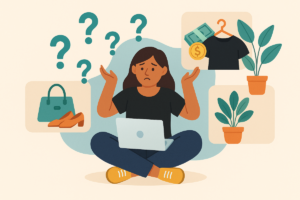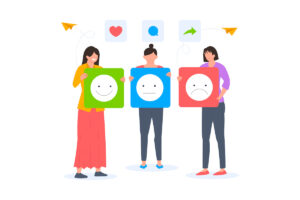As a consumer, when you sit down on your laptop or pick up your phone, doesn’t it always seem like you can never get the information you are looking for without endless ads and popups cluttering your screen?
And how many of these ads do you find useful versus the ones you simply find annoying?
Marketers are seeing a shift away from a steadily increasing trend of increasing digital marketing dollars and putting their money in traditional marketing channels such as print, television, and radio.
But why the change? Since most consumers are spending most of their time online, why is digital marketing falling short of expectations? And what is driving the comeback of traditional marketing channels?
It’s a Matter of Trust
Consumers, on the whole, seem to like that brands put effort and time into creating marketing campaigns that foster trust and credibility. According to a survey by Marketing Sherpa, TV and print ads are trusted by a majority of those consumers polled.
In contrast, consumers seem to feel that some digital ads, have less value and cannot be trusted, simply because of the ease of creation and the frequency of viewing them.
Changing the Target
If you were recently discussing with your BFF that you were going to get a new phone, and suddenly everywhere you look online there are phone ads, you have been targeted.
Digital marketing has the ability to hone in on specific target consumers and avoid wasting time and dollars on people like your neighbor who still uses his flip phone. But by narrowing the target, digital marketing may be missing out on so many other consumers who were not actively looking for that phone, but might consider purchasing once they knew about the features.
Print, TV, and radio ads (and you might consider email marketing traditional at this point) have a broader reach and capture a larger audience than ads digitally targeted.
Saying Goodbye to Third-Party Cookies
Those glorious little tracking morsels we know as internet cookies are slowly meeting their demise, as Google and Apple continue the phase-out of third-party cookies that marketers use to target consumers, with a target date of completion in early 2023. This will make marketers have to get more creative with their digital focus to personalize and retarget consumers and rely on a broader reach for getting the information they need to get closer to a sale. Isn’t this the marketing mix that has been repeatedly successful in the past?
Too Much Clutter
Consumers are getting frustrated with the numerous popups they encounter when browsing online. And trying to read an article or watch a video on social media is equally irritating when interrupted by video ads.
A HubSpot survey found that most people disliked the ads, and as many as 43% never watched them at all.
Many consumers hate the disruption of ads, bots, videos, and banners to the point of abandoning the site and searching for one with much less clutter.
Not the Same Great Deal
As marketing execs continue to shift more dollars into digital campaigns, the ads are no longer the bargain that they used to be. Marketing your brand through social media outlets is costing more and the reach is narrower.
Traditional marketing can be less expensive at a cost per thousand, has a wider audience, and often offers more-needed exposure to raise awareness before anyone would click, prompting more businesses to look into taking a step back to a less cluttered, farther-reaching approach.
Don’t Dismiss the Human Factor
As I discuss in my book, “There Is No B2B or B2C: It’s Human to Human #H2H”, people want to be a part of something bigger than themselves. They want to feel something and feel included. It doesn’t matter if it is a product or service that you are marketing, the human touch, the personalization are important to all of us.
Consumers want to look at how a product or service fits into their life. They don’t want to see the banner that pops up advertising the newest model of a coffee maker. They want to see themselves using it as they would in their own home.
People buy with emotion, so my advice to marketers is to be better storytellers and enroll potential customers into the story you’re telling to earn their clicks. Doing it this way increases loyalty and word-of-mouth on the back-end because consumers feel rapport with brands that “get them”.
Digital Isn’t Going Away
Traditional marketing is as important as ever. It is the marketing segment that we have known and learned to trust. It is our challenge now to broaden the scope of traditional marketing and find ways to connect it to technology to reach our targeted customer base and inspire the customer journey.
By combining the two, you will get more bang for your marketing buck, as well as the reward of business growth and a healthy bottom line.
Want to learn more about marketing and growing your business? Let me show you How to Grow Your Business Without a Funnel, Ads, Or a Website.






